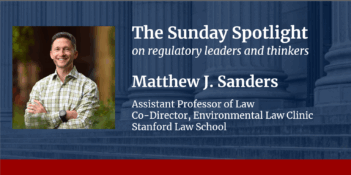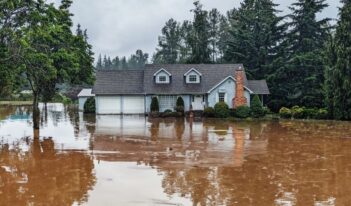
Scholars evaluate the impact and efficacy of deep-sea mining regulations.
To avoid the worst impacts of climate change, scientists contend that the world needs to reach net-zero carbon dioxide emissions by 2050. The United Nations recognizes that renewable energy is the key to achieving this goal. But scientists state that the necessary green energy infrastructure cannot be built without rare earth elements, such as cobalt, nickel, and manganese. As a result, the demand for rare earth elements is expected to increase by 400 to 600 percent over the next several decades as more clean energy is developed.
To account for this demand, many countries and companies are researching deep-sea mining as the presence of rare earth elements on the sea-floor far outweighs the global terrestrial reserves.Deep-sea mining would also reduce some of the economic, environmental, and human rights challenges associated with current terrestrial mining operations. Environmentalists oppose terrestrial mining because it often entails land clearing, excessive water use, and damage to surrounding ecosystems.
Deep-sea mining occurs primarily in the portion of the seabed beyond national jurisdiction broadly known as “the Area.” The United Nations Convention on the Law of the Sea (UNCLOS) created the International Seabed Authority (ISA) to ensure the Area and its resources remain the common heritage of mankind.
To achieve this goal, the ISA has passed several regulations limiting exploration, prospecting, and mining activities in the Area to prevent over-exploitation. Other regulatory bodies, such as the American Bureau of Shipping and the China Association of Oceanic Engineering, have issued guidelines for private companies on constructing environmentally conscious mining units and safely conducting operations.
Despite these regulations, some environmentalists call for a complete moratorium on deep-sea mining until its environmental impacts are fully understood.
Although the minerals extracted through deep-sea mining are crucial for green energy, other environmental concerns may render the industry too damaging to justify its benefits . Scientists fear that mining in the area could release carbon dioxide trapped in the seabed, and that the noise and light pollution generated by mining operations could disrupt delicate ecosystems and lead to biodiversity loss.
The tradeoff between mining on land or in the deep sea, and the associated environmental impacts, has sparked international debate. Since 2023, the ISA has hosted semi-annual negotiation conferences with the goal of adopting regulations by the end of 2025. The 2024 sessions concluded with the election of a new Secretary-General, a development that many participants hope signals a promising direction for future negotiations.
This week’s Saturday Seminar examines regulations proposed to the ISA to maximize the social welfare of deep-sea mining.
- Stakeholders should continue to foster open dialogue on how to equitably distribute the economic benefits of deep-sea mining for the benefit of humankind, argues Daniel Wilde of the Commonwealth Secretariat and several coauthors in an article in Marine Policy. The Wilde team proposes the creation of a Seabed Sustainability Fund, which could be used to invest in research about the Area and mitigate mining-related harms. The Wilde team criticizes the idea of using funds from deep-sea mining to address problems that are directly caused by the mining activities themselves, although they note that the model has some potential. The Wilde team also emphasizes the importance of including developing countries in the decision-making processes to ensure that their interests are represented.
- In a recent article in the International Journal of Coal Science & Technology, Xingsen Guo of the University College London and several coauthors highlight the significant potential for improving mining efficiency across three stages of mining operations—exploration, extraction, and closure—and argue that regulations at the closure stage are necessary for facilitating environmental recovery. The Guo team states that restorative practices are critical to limit the negative ecological impacts of mining. They recommend the construction of artificial algae farms and the planting of mangroves to absorb heavy metals from the seawater, and the placement of artificial reefs and seaweed farms to create good environments for marine life to inhabit to restore ecological imbalances.
- As deep-sea mining emerges as a potential solution to reduce dependence on fossil fuels, Steven Katona of College of the Atlantic and several coauthors argue in an article in Biodiversity and Conservation that comparing biodiversity loss caused by mining across different ecosystems is necessary but insufficient. The Katona team highlights challenges in comparing biodiversity in deep-sea and terrestrial ecosystems, including methodological differences among studies, sampling limitations, and difficulties in conducting value judgments when there is a lack of information about deep-sea species. To supplement quantitative biodiversity comparisons, the Katona team suggests incorporating qualitative assessments, such as the ecosystem’s geographical location, the extent of systemic threats posed by mining, and moral and ethical considerations.
- In a Congressional Research Service report, Caitlin Keating-Bitonti discusses how Congress can promote knowledge of marine environmental impacts and increase the United States’ involvement in the deep-sea mining industry. If the United States were to join the UNCLOS, it could sponsor U.S. companies seeking ISA contracts, eliminating the need for American companies to establish a subsidiary in one of the UNCLOS member countries, Keating-Bitonti contends. In addition to international agreements, she points out that Congress could fund research to develop better energy and seabed mining technology. Keating-Bitonti concludes that despite various regulatory options and a growing understanding of seabed mining, a “robust understanding” is necessary to prevent negative environmental impacts from seabed mining activities.
- In a recent article in Marine Policy Becky Hitchin of the Commonwealth Secretariat and several coauthors argue that ongoing ISA negotiations should integrate ecological and management thresholds into any regulations. Generally, a regulatory threshold is a limit beyond which unwanted consequences are likely to occur, explains the Hitchin team. They further clarify that ecological thresholds represent tipping points with associated environmental impacts, while management thresholds serve as a buffer to avoid ecological thresholds. Hitchin and her coauthors contend that effective regulations must first identify all relevant ecological thresholds in the Area and then set management thresholds that promote economic development without surpassing the ecological limits.
- For the potential regulations to be most effective at protecting the environment in the long-run, Xiangxin Xu, Minghao Li, and Guifang Xue of China’s KoGuan School of Law argue in a recent article in Marine Affairs and Policy that regulations must incorporate and operationalize “Best Practices” standards to update automatically with new discoveries. Best Practices, the Xu team states, includes best available scientific evidence, best available techniques, and best environmental practices standards. The Xu team proposes definitions for each type of Best Practice standard and recommends how they should be embedded in the regulations for successful implementation. Xu and her coauthors contend that incorporating these standards creates the strongest defense for the environment, but only if they are properly operationalized.



